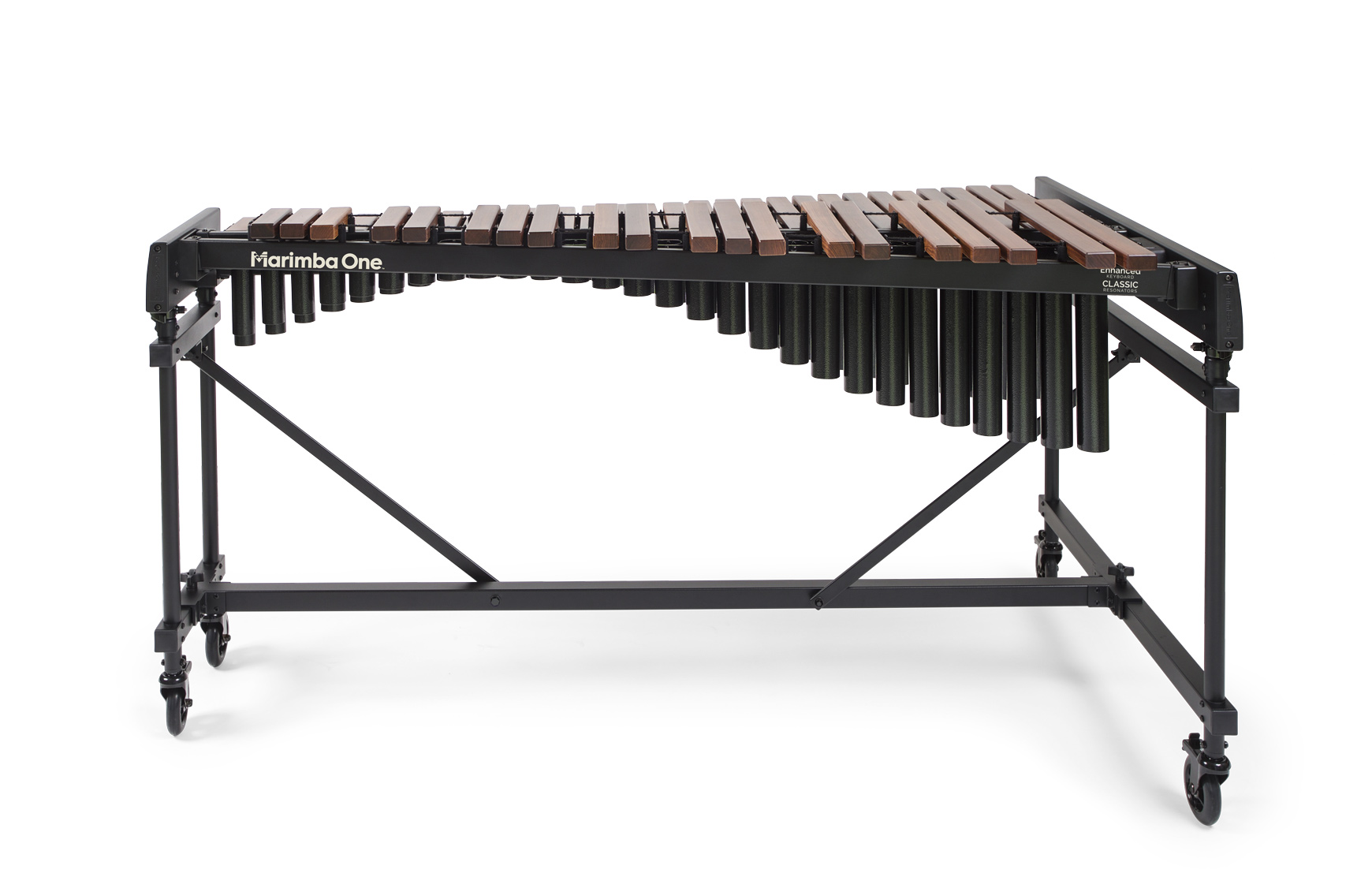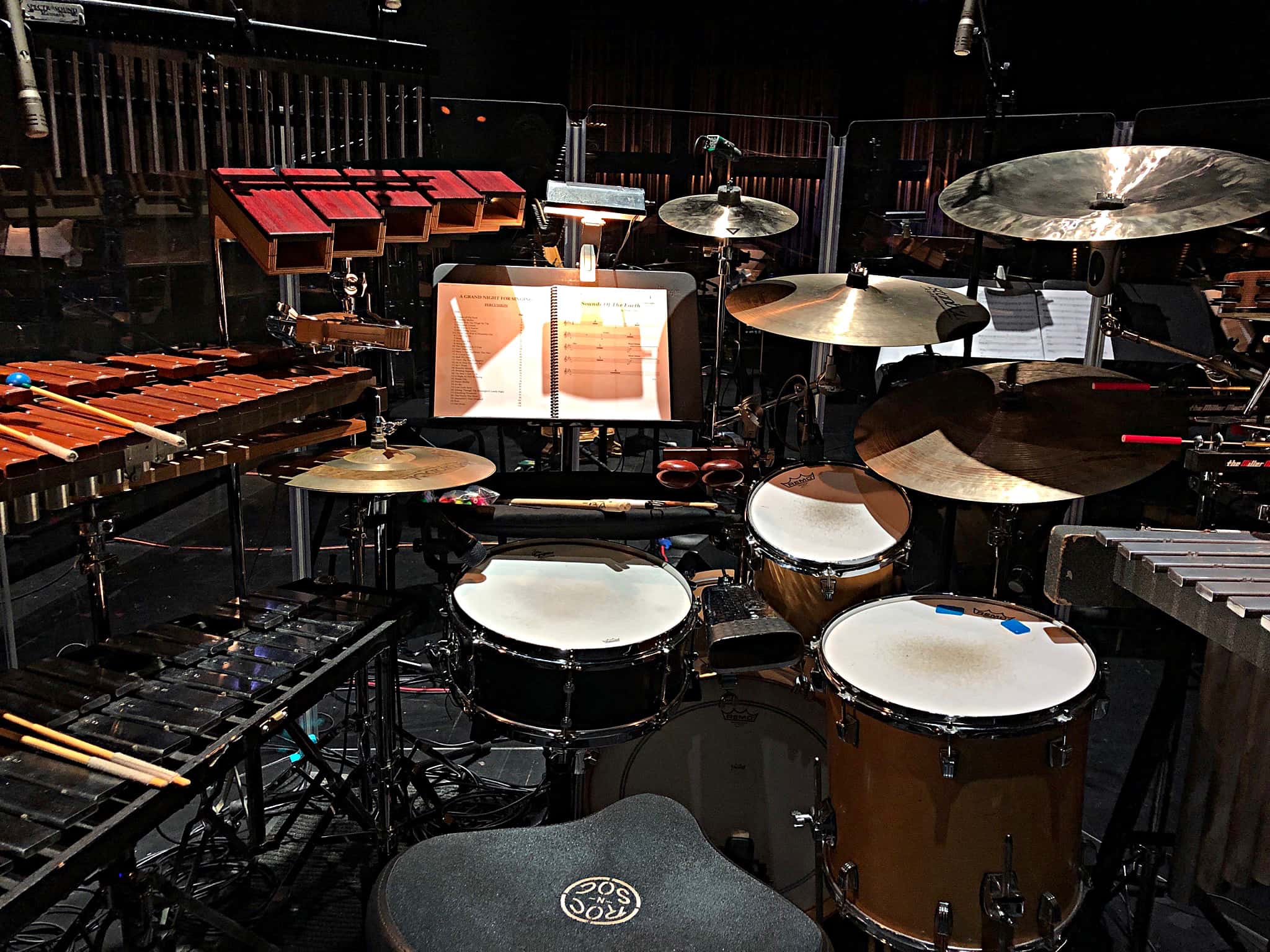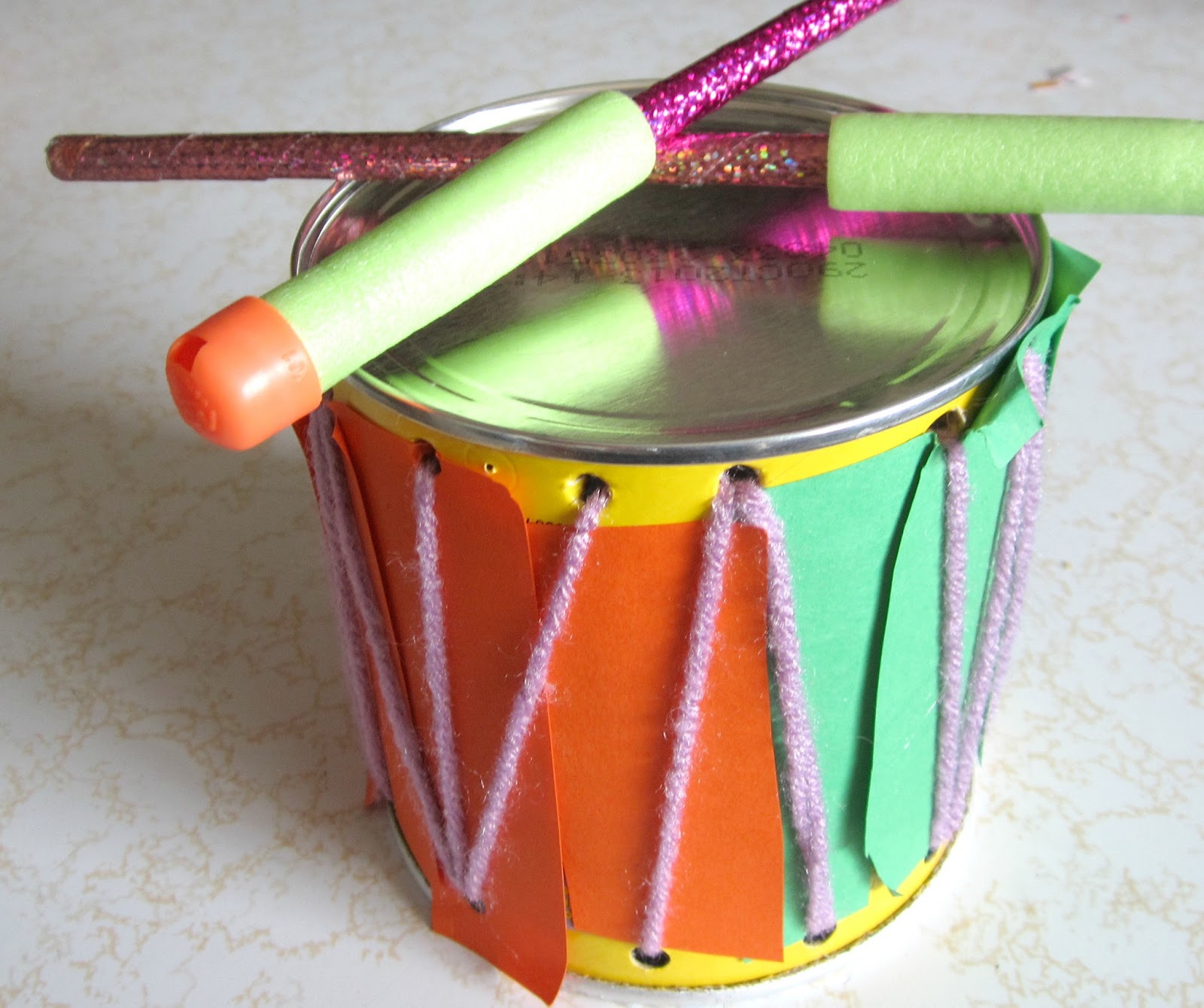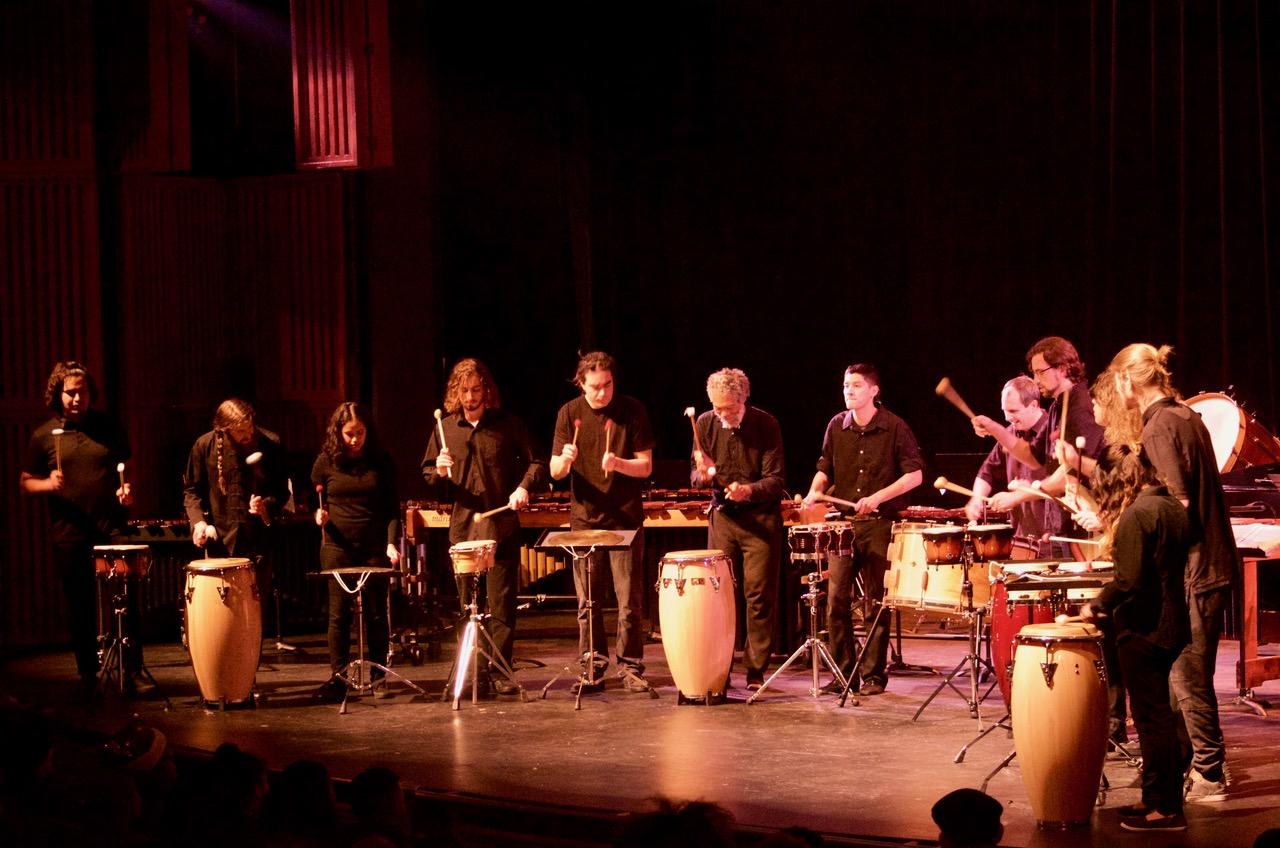Home>Instruments>Percussion Instruments>What Is Used To Strike Percussion Instruments.
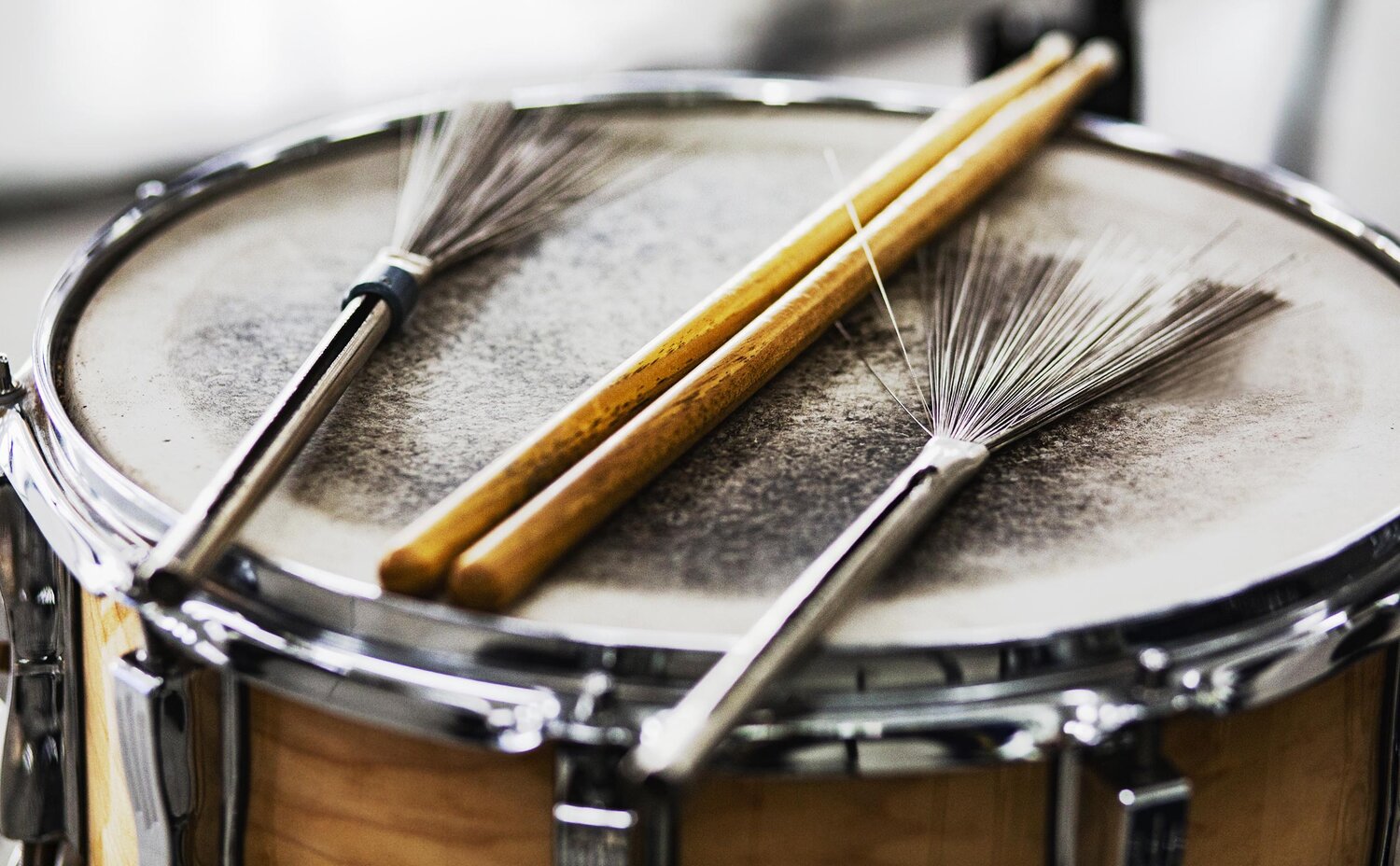

Percussion Instruments
What Is Used To Strike Percussion Instruments.
Modified: February 7, 2024
Discover the essential tools used to strike percussion instruments and create mesmerizing beats. Explore the wide range of percussion instruments and their unique sounds.
(Many of the links in this article redirect to a specific reviewed product. Your purchase of these products through affiliate links helps to generate commission for AudioLover.com, at no extra cost. Learn more)
Introduction
Percussion instruments are an integral part of many musical genres, adding rhythm and texture to the overall sound. These instruments produce sound when struck or hit, and the manner in which they are struck greatly affects the tone and volume. It is fascinating to explore the various tools that musicians use to strike percussion instruments. From traditional drumsticks to innovative brushes, each tool brings a unique element to the performance.
In this article, we will delve into the world of percussion instruments and discuss the different tools used to strike them. Whether you are a music enthusiast or a beginner learning to play percussion, understanding the role of these tools is essential for creating the desired sound and expression.
So, let’s embark on a journey through the diverse range of tools used in percussion playing, from the classic drumsticks to the more specialized mallets and brushes. We will also explore the world of beaters, hammers, whips, sticks, rods, and even the most natural of all tools – the hands. Each tool has its unique characteristics, making percussion playing a truly versatile and captivating art form.
Drumsticks
Drumsticks are the most common and widely recognized tool used to strike percussion instruments, particularly drums. They are typically made of wood, although there are also variations made from synthetic materials like carbon fiber or plastic. Drumsticks come in various shapes, sizes, and weights, allowing musicians to achieve different sounds and effects.
The two main parts of a drumstick are the tip and the shaft. The tip is the end that strikes the drumhead or cymbal, and it can be shaped in different ways to produce distinct sounds. For example, a round tip offers a balanced sound, while a pointed tip produces a sharper attack. The shaft is the long, thin portion of the stick that the drummer holds, providing control and balance.
Drumsticks are typically classified by their diameter and weight. A thinner drumstick is lighter and more agile, ideal for faster and more intricate drumming techniques. On the other hand, a thicker drumstick provides more power and volume, suitable for heavier playing styles. Drummers often experiment with different sizes and weights to find the perfect balance for their playing preferences.
While drumsticks are predominantly associated with drum sets, they are also used to strike other percussion instruments like xylophones, marimbas, and tambourines. However, it’s worth noting that certain instruments may require specialized drumstick variations, such as rubber-headed drumsticks for electronic drum pads or softer mallet-tipped sticks for delicate instruments.
Overall, drumsticks are versatile tools that exhibit a wide range of playing techniques and styles. Whether you’re rocking out on a drum kit or exploring the nuances of other percussion instruments, having the right pair of drumsticks can greatly enhance your playing experience.
Mallets
Mallets are specialized tools used to strike a variety of percussion instruments, most commonly mallet instruments like xylophones, marimbas, and vibraphones. They consist of a shaft or handle and a head, which can be made of various materials like rubber, yarn, or hard plastic.
The design of the mallet head greatly influences the sound and articulation produced. Harder heads, such as those made of rubber or hard plastic, create a sharper attack and a brighter tone. On the other hand, softer heads, like those covered in yarn, produce a warmer and more rounded sound.
Mallets come in different sizes, shapes, and weights, allowing musicians to achieve different tonal qualities and effects. Larger mallets with heavier heads produce a fuller and more powerful sound, while smaller mallets with lighter heads create a more delicate and nuanced tone.
When playing mallet instruments, musicians must balance the technique of striking the instrument with the appropriate mallet and the desired sound they wish to achieve. The angle and pressure applied by the player can also affect the quality of the sound produced.
While mallets are primarily associated with mallet instruments, they can also be used on other percussion instruments. For example, certain types of drums, gongs, or even cymbals can be struck with mallets to produce specific sounds and textures.
Overall, mallets offer a versatile and expressive way to play percussion instruments. They provide a wide range of tonal possibilities and allow musicians to create a rich and varied musical experience.
Brushes
Brushes are a unique tool used to strike percussion instruments, particularly drums and cymbals. They consist of a bundle of thin wires or bristles attached to a handle, allowing for a different playing technique and sound compared to traditional drumsticks.
Unlike drumsticks or mallets, brushes provide a softer and more nuanced sound. When played on drumheads, the wires or bristles create a sweeping motion, producing a distinctive swishing sound. This technique is commonly used in jazz music to create a more subtle and textured rhythmic accompaniment.
Brushes come in various styles, offering different wire thicknesses, lengths, and handle materials. Thicker wires produce a fuller sound with more attack, while thinner wires create a lighter and softer tone. Some brushes also have retractable wires, allowing musicians to adjust the spread of the wires and modify the sound produced.
In addition to drums, brushes can be used on other percussion instruments like cymbals or even gongs. The sweeping motion of the brushes on the cymbal surface creates a unique shimmering effect, adding a touch of elegance and subtlety to the overall sound.
When using brushes, drummers can vary their playing techniques to achieve different effects. By adjusting the pressure, angle, and speed of the brush strokes, they can create a wide range of sounds – from a delicate whisper to a more pronounced and rhythmic texture.
Brushes offer a distinctive and versatile approach to percussion playing. Their unique sound and expressive capabilities make them a favorite tool among drummers and percussionists looking to add a touch of sophistication and finesse to their performances.
Beaters
Beaters are tools specifically designed to strike certain percussion instruments, including bass drums, timpani, and certain types of mallet instruments. They are typically made of materials like wood, felt, or synthetic materials and are shaped to produce the desired sound and articulation. Beaters come in various shapes and sizes to accommodate the unique characteristics of each instrument.
For bass drums, beaters are often large and padded, providing a deep and resonant sound. They can have a round or square-shaped surface and are attached to a shaft for easy handling and control. The material used for the striking surface can vary, from soft felt for a mellow tone to harder materials for a more pronounced attack.
Timpani beaters are specifically designed to strike the tensioned heads of the timpani drums. They can have a range of shapes, such as round, soft mallets for a warm and sustained sound or hard sticks for a sharper and more articulate attack. The choice of beater depends on the desired tonal qualities and the playing technique required by the musician.
Some mallet instruments, like the glockenspiel or the tubular bells, also require specialized beaters. These beaters are typically made of wood or metal and have a hard, round head that is capable of producing a clear and defined tone when striking the metal bars.
Beaters are an important tool for percussionists, as they directly determine the sound and character of the instrument being played. The choice of the beater, along with the technique and touch applied, can greatly impact the timbre, volume, and expression of the instrument.
Overall, beaters are essential tools for striking percussion instruments, enabling musicians to create a wide range of tones, dynamics, and textures. By selecting the right beater for the instrument and musical context, percussionists can achieve the desired sound and bring their performances to life.
Hammers
Hammers are specialized tools used to strike specific percussion instruments, particularly those with metal components such as steel drums or the hammered dulcimer. They are designed to provide a specific timbre and articulation when played.
When it comes to steel drums, also known as pan drums, hammers are essential for producing the characteristic Caribbean sound. These hammers have a rounded or cylindrical head and are made of materials like rubber, wood, or synthetic materials to achieve the desired tonal qualities. The shape and density of the hammer head can be tailored to create different levels of attack, sustain, and volume.
Similarly, hammers for the hammered dulcimer, a stringed instrument played with mallets, have a unique design. They are often made from hardwoods like rosewood or maple and feature elongated, padded heads. The shape and density of the hammer head allow the player to produce the distinctive bell-like tones from the dulcimer strings.
Hammers are crucial tools for playing these specific percussion instruments, as they enable musicians to coax a particular sound and expressiveness from the instrument. They provide the necessary control and precision required to achieve the desired tone and articulation.
Whether it’s the captivating and rhythmic beats of the steel drums or the melodic charm of the hammered dulcimer, hammers play an integral role in bringing these percussion instruments to life. Their unique design and construction allow musicians to explore the full sonic potential of these instruments and create captivating musical performances.
Whips
Whips, also known as whipsticks or whip rods, are specialized tools used in percussion to create unique sound effects. These instruments consist of a handle or rod with several attached strings or thin strips of material, such as nylon or metal.
When played, a whip produces a distinct cracking sound through a striking motion. The strings or strips are rapidly pulled taut and then released, creating a sonic effect similar to the crack of a whip. The length and tension of the strings, along with the force applied by the player, determine the intensity and pitch of the resulting sound.
Whips are commonly used in orchestral percussion, particularly in pieces that require dramatic or atmospheric effects. The striking sound of the whip can evoke a sense of tension, excitement, or mystery, adding a dynamic element to the overall performance.
While whips are mainly associated with percussion ensembles or orchestras, they can also be used in various musical genres. They offer a unique and distinctive sound that can add texture and flair to performances in rock, pop, jazz, or experimental music.
Playing the whip requires skill and precision, with the player needing to carefully control the motion and tension to achieve the desired sound. The whip can be struck against a variety of surfaces, such as drums or cymbals, to alter the tone and create additional sonic variations.
Whips are a fascinating percussion tool that provides a theatrical and expressive element to music. Their ability to create a sharp and resonant cracking sound makes them a captivating addition to any musical performance.
Sticks
Sticks are versatile tools used to strike a wide range of percussion instruments, including drums, cymbals, and woodblocks. They are typically cylindrical in shape and come in various sizes, materials, and designs to accommodate different playing styles and instruments.
Drumsticks, often referred to as sticks, are the most common type of stick used in percussion. They are usually made of wood, although there are also synthetic options available. Drumsticks come in different diameters and lengths, allowing drummers to choose the right pair to suit their playing preferences and the type of drums they are using.
Cymbal sticks, on the other hand, are specifically designed for striking cymbals. They are generally lighter and have a smaller tip compared to drumsticks, allowing for a more focused and controlled sound when playing cymbals.
Woodblock sticks, as the name suggests, are used to strike woodblocks. These sticks are often shorter and made from materials that create a clear and resonant sound when striking the wooden block.
Sticks can also be used for other percussion instruments, such as the triangle or the tambourine. Depending on the instrument and the desired sound, choosing the right stick with the appropriate weight, material, and tip shape is crucial to achieve the desired result.
While sticks are a fundamental tool in percussion, they offer a wide range of creative possibilities. By adjusting the angle, pressure, and velocity of the strikes, percussionists can control the dynamics, tone, and textures they produce.
Overall, sticks are essential tools for striking various percussion instruments. Their design and construction allow for precision, control, and versatility, enabling musicians to achieve a diverse range of sounds and effects.
Rods
Rods, also known as drum rods or multi-rods, are specialized percussion tools that provide a unique playing experience and sound. They consist of multiple thin rods bundled together and attached to a handle or shaft.
Unlike traditional drumsticks or mallets, rods offer a different approach to playing percussion instruments. The multiple rods create a softer and more delicate sound compared to solid sticks. They allow for a greater level of control and subtlety, making them ideal for low-volume settings or acoustic performances.
Rods are commonly used on drums, particularly snare drums and cymbals, to produce a gentle and nuanced sound. They can also be used on other percussion instruments like hand drums or cajons to achieve a softer and more mellow tone.
The flexibility of the bundled rods allows percussionists to adjust the sound and volume by varying the grip, pressure, and angle of attack. By altering the way they hold the rods, musicians can create different textures, timbres, and dynamics, offering a wide range of expressive possibilities.
Rods come in various sizes, with different numbers of rods bundled together. Some rods have thicker and stiffer cores, while others are more flexible, resulting in different tonal qualities and playing characteristics.
Whether you are a drummer looking to explore new sounds or a percussionist seeking a softer and more nuanced approach, rods can provide a unique sonic experience. They offer a delicate touch and a wide range of tonal possibilities, allowing musicians to create captivating performances in a variety of musical contexts.
Hands
When it comes to striking percussion instruments, one of the most natural and versatile tools at a musician’s disposal is their own hands. Hands can be used to produce a wide range of sounds and effects on various percussion instruments, creating a direct connection between the player and the instrument.
Using hands to play percussion instruments offers a unique level of control and expressiveness. The amount of force, the surface area of contact, and the angle of attack can all be finely adjusted to achieve different tones, dynamics, and textures.
Hand percussion instruments, such as djembes, congas, bongos, or tambourines, are specifically designed to be played with hands. By striking, slapping, tapping, or even using fingertips or palms, musicians can produce a rich variety of sounds and rhythms.
Even for instruments that are traditionally played with other tools, such as drums or cymbals, hands can be used to provide a different sonic character. Percussionists may incorporate hand techniques like palm rolls, finger snaps, or rim clicks to add distinct elements to their performances.
Playing with hands allows musicians to tap into the natural resonances of the instrument, creating a more organic and intimate sound. It offers a direct connection between the player and the instrument, allowing for a deeper level of expression and improvisation.
Whether it’s the primal beats of hand drums or the delicate subtleties of finger techniques on a cymbal, using hands as percussion tools brings an unmistakable human touch and raw energy to the music.
Overall, hands are a versatile and powerful tool in the world of percussion. They provide a direct and personal way for musicians to engage with their instruments, offering endless possibilities for creativity and musical expression.




